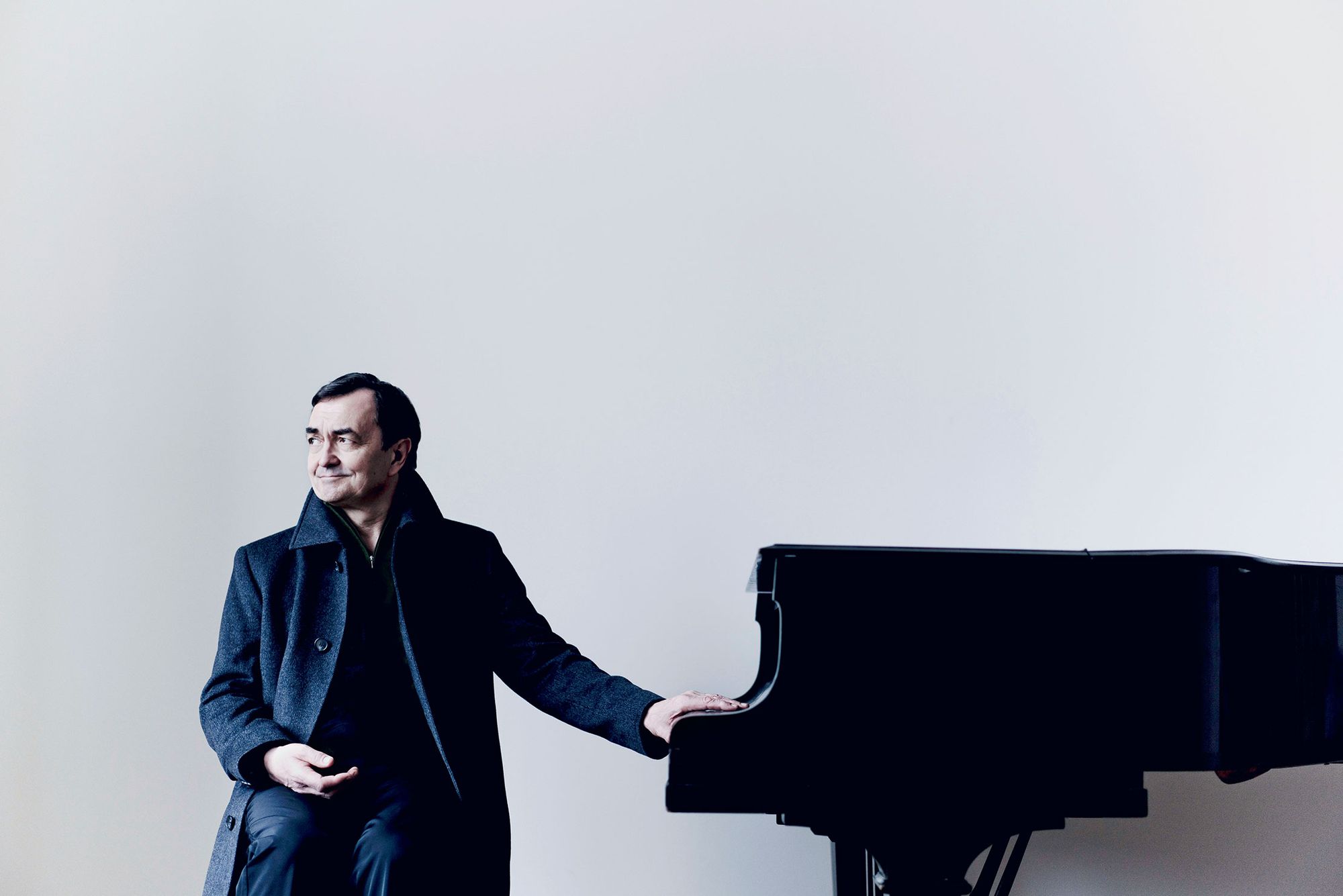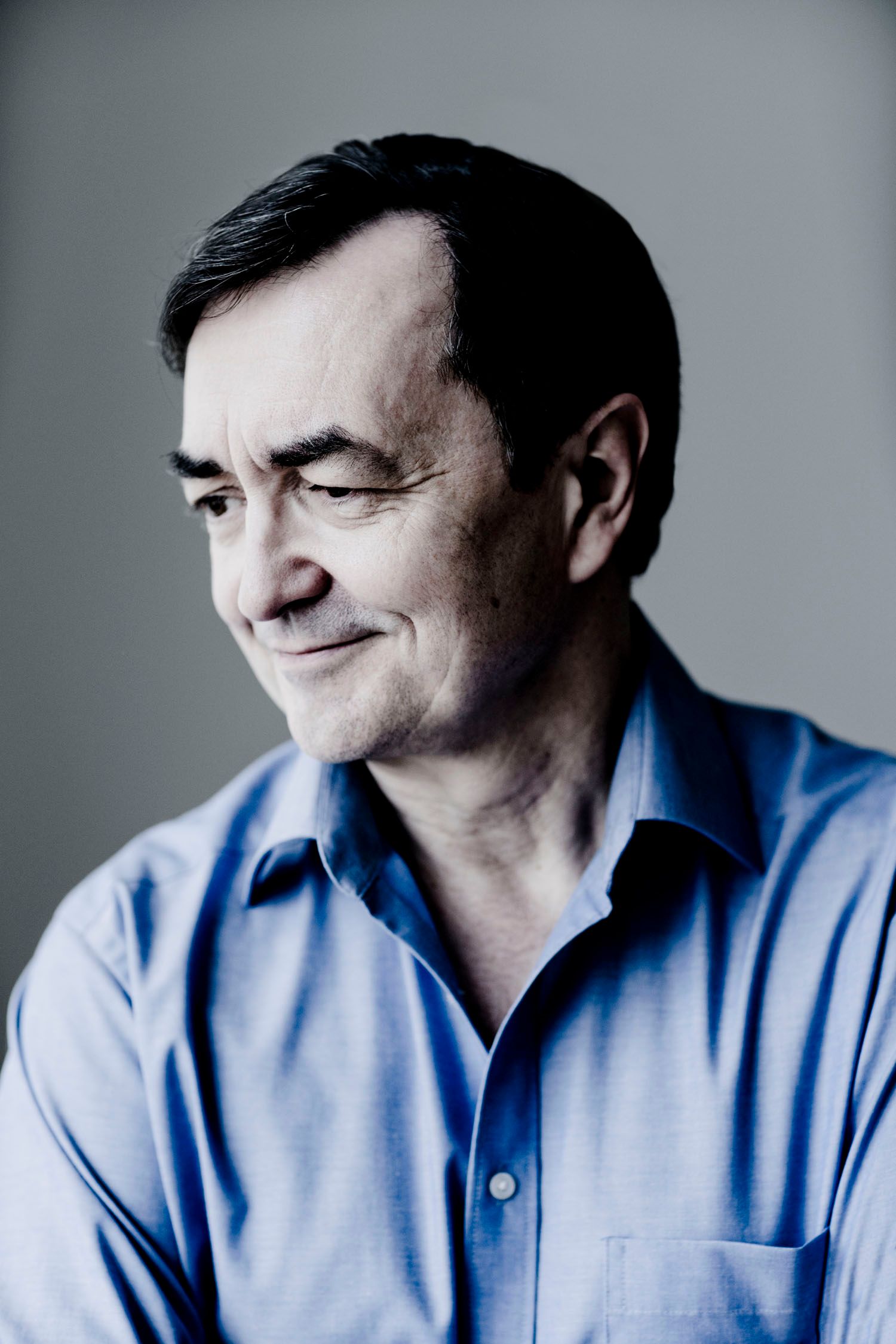Interview and review: Pierre-Laurent Aimard in Beethoven

It was a pleasure to catch up with Pierre-Laurent Aimard during last year's Berlin Festival and to talk about his recording of Beethoven's “Hammerklavier Sonata,” which he has coupled with the “Eroica Variations”. The “Hammerklavier” has a massive reputation amongst pianists and non-pianists alike. Is he, I wonder, attracted to pieces that take pianists to extremes? (I think also of heis performances, and recording, of Ligeti's Etudes).
Artistically yes, very strongly I think that I feel attrected by moments in the history of art that are close to borders, because then you get the chance to discover more, maybe. There is a certain danger of destabilisation that is, I think, very healthy. This is for me a very fruitful and indispensible way to live. Speaking for the “Hammerklavier,” it's not that it is a challenge in itself, or a reference for pianists.
By the way, when I was young - and your identity gets forged when you are young - the “Hammerklavier“ was unknown, unplayed and almost as something not existing for pianists. It became a warhorse for pianists - you have to make your “Hammerklavier“ debut if you want to be considered seriously.
Aimard had a “limited and certainly unsuccessful confrontation” with the “Hammerklavier” when he was 15 or so. Now, many years later, he feels it is time to commit his interpretation to disc.
It is perhaps natural that one should associate Aimard with contemporary music, but his education, as he points out, was balanced:
I was educated as a young child with music by what was new at that moment in the early 1960s, that means Boulez, Stockhausen and many others. They were not inevitable landmarks at that time - they were yonng, dangerous avant-gardists. But I was also educated with tonal language and Classical music. So Beethoven was one of the first musics I listened to, loved and played, so the fact that I played more recent music doesn't mean that it would be more strange for me, or like a foreign language.
There is a clarity of polyphony in Aimard's Beethoven is remarkable. In the next comment, Aimard refers also to the composer Mark Andre, whose works he was performing in Berlin at the time (fllow the hyperlink for some information about Andre and a further link to a most useful Soundcloud account):
It's the wish that one listens to the piece, and not to the part you are playing, not to the habits. If I see an incredible polyphony in any piece - this could be Mark Andre or this could be Beethoven, I wish my listener to listen to the polyphony. Whether Andre or Beethoven, I wish my listener to have clarity. That's my job, as an interpreter, isn't it?
Here is Aimard’s first movement of Op. 106, Perhaps listen around the six minutes-plus mark for Beethoven’s counterpoint, and how he then works gesturally with fragments. Aimard ensures that a return to lyricism makes its mark by highlighting the disjointed nature of what comes before:
Aimard's Scherzo is capricious, as it should be - cheeky, even. Yet the care is everywhere appraent - listen to how he ‘places’ the left-hand simple octaves near the start, and now even the triplet left-hand bed of sound is when the music turns lyrical:
The famous slow movement finds Aimard pinpointing and creating the perfect space, ensuring a sense of expansion but allowing for some momeentum and a sense of unfolding:
The track for the finale begins with the Lento, and Aimard provides one of the finest transitions into the great Fugue. It's exploratory and revels in snippets of counterpoint as it should; it is also crystal clear. There is a Bachian rigour to some of the counterpoint; and yet how modern is the approach to the fugue itself, the asyhchronous octaves discombobulating before the perfectly even fugue subject (did even Pollini play it this clearly in his classic DG account?). Also, note how well prepared his piano is, and how the recording captures this:

The Coupling: 15 Variations with Fugue on a Theme from the “Eroica’ Symphony
The choice of the Eroica Variations, Op. 35 as a companion piece came about after a long session of brainstorming:
What can you couple with the “Hammerklavier”? I have tried every kind of programme, something works maybe, but you feeli t is an impossible challenge. Then I thought one of the fascinating dimensions is polyphony, the fugue, the coronation of a solution, or where the transfiguration of an entire project comes through the rehabilitation, the re-invention, of the fugue.
Something which, Aimard says, means the
... innoculation of sonata form, of instrumental form, with cantando. So a hybridation of the two big traditions in music, a hybridation of Renaissance and Baroque traditions. This vision, historical and philosophical, is so strong in late Beethoven. Well, this gigantic exploding virtuosic polyphonic piece that is so far from a traditional fugue in the “Hammerklavier” is something that only Michelangelo or Shakespeare could have invented, like a crazy constructed gesture for the integrated transfiguration of a dramatic process. So this is something very strong. And in the “Eroica Variations,” we have that somewhere at an earlier stage, a very strange and fascinating set of variations with a theme that you discover little by litle - at the start, only the bass - with an incredibly varied, characterised and inventive process of variations and then, when it seems that nothing could really end the piece except for a Fugue, then again a crazy, virtouso, incredibly “Lebhafter“ (vital) fugue. Two very different ways to do it. Ideally you could pair “Hammerklavier” and the Diabelli Variations, bit its too much and its not a CD project. Maybe another time ...
The theme of the final movement of the “Eroica” Symphony is initially conspicuously absent in both the Symphony and the Variations - Beethoven gives us instead the bassline and adds to it ‘A due’ ‘A tre’; ‘A quattro,’ before we get the theme itself, deliciously delivered by Aimard - he refers to this process in the quote above.
Aimard manages to characterise each variation impeccably while seeing the bigger picture. You can sample individual variations at the Spotify link below, or here’s a complete performane that Aimard gave at the Alte Oper, Frankfurt, in 2016 (which also acts as a ratehr nice supplement to the Warner recording):
At the time of writing, the YouTube individual variations are not working, but perhaps use the Spotify below to listen to the evenness he brings to Variation VI, or the quirkiness he brings out in the “Canone all'ottava” Variation VII, or the charm to Variation XI. Aimard’s “Maggiore,” the 15th variation that immediately precedes the fugue, is magnificent. It's slow and a thing of beauty, the fugue itself questing with an unquenchable curiosity.
Talking of Spotify and its ilk, I mention in passing to Aimard that this means one can move around the variations with ease.
The problem is that if generations start to think like that, or to read like that. We know that polyphony in terms of neuroscience is never a perfectly parallel drive, it is constantly moving from one layer to the other, and the danger is of course a loss of continuity in concentration, of spirit of consequence. And then of course what becomes of all the literature of the 19th century.
What, indeed, do you do with Wagner? ...
